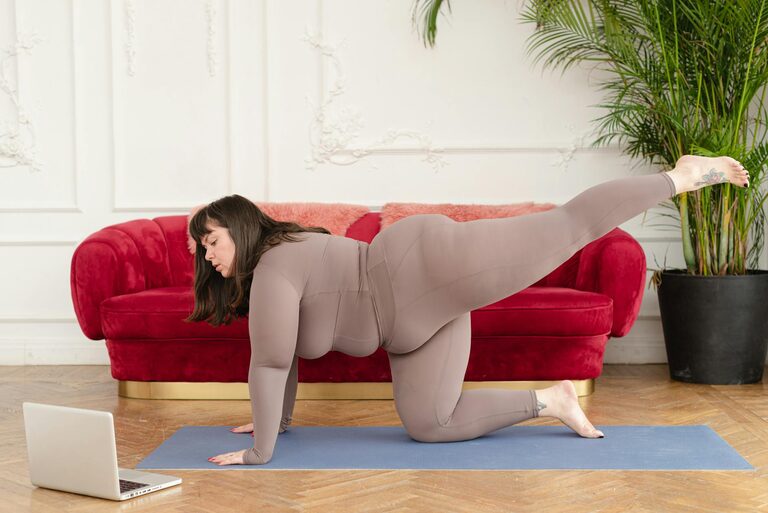Stretching is a wonderful habit that benefits both your body and mind. Whether you want to improve your flexibility, reduce muscle tension, or simply feel more relaxed after a long day, incorporating stretching into your routine can be a game changer. The best part? You don’t need a gym or special equipment — just a little space at home and a few minutes each day.
In this beginner’s guide, we’ll explore the basics of stretching, how to get started safely, and some easy stretches you can do at home.
Why Stretching Matters
Stretching helps lengthen muscles and tendons, improving your range of motion. This can:
– Enhance physical performance
– Reduce the risk of injury
– Relieve muscle tightness and soreness
– Improve posture and circulation
– Promote relaxation and reduce stress
Whether you’re active or mostly sedentary, stretching regularly supports your overall well-being.
When to Stretch: Timing Tips
You can stretch at different times depending on your goals:
– Before exercise: Warm up with dynamic stretches (moving stretches) to prepare your muscles.
– After exercise: Use static stretches (holding a stretch) to help muscles relax and recover.
– Anytime: Stretch gently anytime you feel tightness or stiffness.
For beginners, stretching after a warm-up or exercise can be the safest and most effective approach.
Safety Guidelines for Beginners
Starting a stretching routine should be gentle and mindful. Here are some tips to keep in mind:
– Warm up first: Stretch cold muscles can cause injury. Walk or march in place for a few minutes before stretching.
– Avoid bouncing: Stretch steadily and hold each pose without rapid or jerky movements.
– Breathe naturally: Don’t hold your breath while stretching; breathe deeply to help relax.
– Listen to your body: Stretch to a comfortable tension, never pain. If something hurts, ease off.
– Stay consistent: Aim for 10-15 minutes a day, 3-5 days a week, to see the best results.
Remember, stretching is about patience and gradual improvement.
Essential Stretches to Try at Home
Here are some beginner-friendly stretches covering major muscle groups. Hold each stretch for 15-30 seconds and repeat 2-3 times.
1. Neck Stretch
– Sit or stand tall.
– Gently tilt your head to one side, bringing your ear toward your shoulder.
– Use your hand to apply slight pressure if desired.
– Switch sides.
2. Shoulder Stretch
– Bring one arm across your chest.
– Use the opposite hand to hold the arm just above the elbow.
– Pull gently toward your chest and hold.
– Repeat on the other side.
3. Chest Stretch
– Stand in a doorway with your arms on the frame at shoulder height.
– Step one foot forward and gently lean in until you feel a stretch across your chest.
– Keep your back straight and hold.
4. Seated Hamstring Stretch
– Sit on the floor with one leg extended straight.
– Bend the other leg so the sole of your foot rests against the inner thigh of the extended leg.
– Reach toward the toes of the extended leg without bouncing.
– Switch legs.
5. Cat-Cow Stretch (Spine Mobility)
– Position yourself on hands and knees.
– Arch your back, tucking your chin toward your chest (Cat).
– Then, drop your belly and lift your head and tailbone (Cow).
– Alternate slowly 8-10 times.
6. Quadriceps Stretch
– Stand near a wall or chair for balance.
– Bend one knee and bring your heel toward your buttock.
– Grab your ankle and gently pull, keeping knees close together.
– Switch legs.
7. Calf Stretch
– Stand facing a wall with one leg forward and one leg back.
– Keep back leg straight and heel on the floor.
– Lean forward, bending your front knee until you feel a stretch in your back calf.
– Switch legs.
Creating Your Own Stretching Routine
Start with 5-7 stretches that feel helpful and manageable. You can follow this simple routine:
- Warm up with light movement for 3-5 minutes
- Perform each stretch, holding for 20 seconds
- Repeat the circuit 1-2 times
- Finish by taking a few deep breaths and relaxing your muscles
Adjust stretches or timing based on how your body responds. Over time, try to increase your hold time and add variety.
Tips to Stay Motivated
– Stretch at the same time each day (morning, lunch break, or evening)
– Use guided videos or apps for direction and encouragement
– Pair stretching with music or meditation to enhance relaxation
– Track your progress and celebrate improvements in flexibility
– Invite a friend or family member to join for added fun
Final Thoughts
Stretching at home is an accessible, low-cost way to improve your health and comfort. By starting slowly and focusing on consistency, you’ll develop greater flexibility and reduce muscle tension. Most importantly, enjoy the process and listen to your body. Then you’ll build a healthy stretching habit that lasts a lifetime.
Happy stretching!

